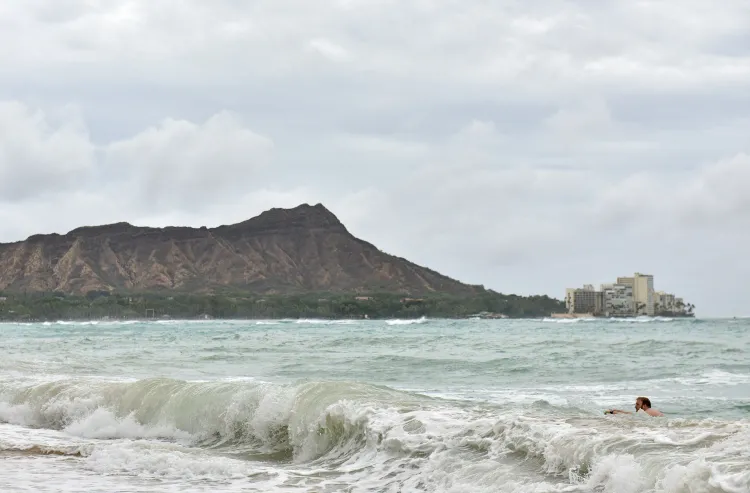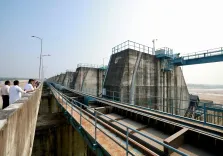What Happened When Tsunami Waves Struck Hawaii?

Synopsis
Key Takeaways
- The tsunami caused flooding in low-lying coastal areas.
- Emergency sirens were activated, leading to widespread evacuations.
- Over 90 vessels evacuated Honolulu's main port for safety.
- No injuries or significant damages reported as of now.
- The incident highlights Hawaii's vulnerability to natural disasters.
Honolulu, July 30 (NationPress) – Tsunami waves have impacted various regions of Hawaii, inundating low-lying coastlines and prompting extensive evacuations, following an earthquake that occurred in Russia's Far East, according to local media reports on Wednesday.
On Tuesday night, waves reaching heights of up to four feet struck Oahu’s North Shore, forcing seawater into the Haleiwa Boat Harbour and causing temporary flooding in adjacent parking areas. Water surged into the harbour around 9:10 PM local time, reaching ankle depth before receding within five minutes. Although the area was mostly empty, some vehicles and docked boats were present when the wave hit, as reported by CNN citing KHNL, a Honolulu television station.
In reaction, emergency sirens were activated across Oahu, and local officials urged residents to seek higher ground. Many in Honolulu adhered to these advisories and moved to elevated spaces as a safety measure.
As per local media sources, over 90 vessels departed from Honolulu’s main port in the hours post-tsunami, including fishing boats, recreational craft, and Coast Guard ships, all heading towards deeper waters where the risk from surging waves is minimized. Maritime tracking systems indicated consistent traffic moving away from the harbour, demonstrating a coordinated response from port authorities and ship operators.
While the tsunami warning for Hawaii has been downgraded to an advisory, coastal areas remain vigilant for potential surges or hazardous sea conditions. Officials have advised the public to stay clear of beaches, harbours, and piers due to strong currents that may linger for several hours following the initial wave activity.
This tsunami event was part of a larger disturbance across the Pacific, with wave activity observed along the US West Coast and tsunami warnings issued in certain areas of the South Pacific. Nevertheless, the immediate focus in Hawaii has been on ensuring coastal safety and monitoring for any lingering ocean activity.
Despite the minor flooding and evacuations, no injuries or significant damage have been reported thus far. Emergency services remain vigilant, with maritime traffic being closely monitored, as reported by American media.
This incident underscores Hawaii’s susceptibility to oceanic natural events and the critical role of early warning systems. The swift response from both the public and institutions was essential in mitigating the tsunami's impact. Authorities commended the prompt evacuation of vessels and the public’s compliance with safety directives.
As conditions stabilize, both residents and visitors are urged to stay alert and follow updates from local officials. Coastal areas are expected to remain off-limits until the advisory is lifted and safety conditions are confirmed.









